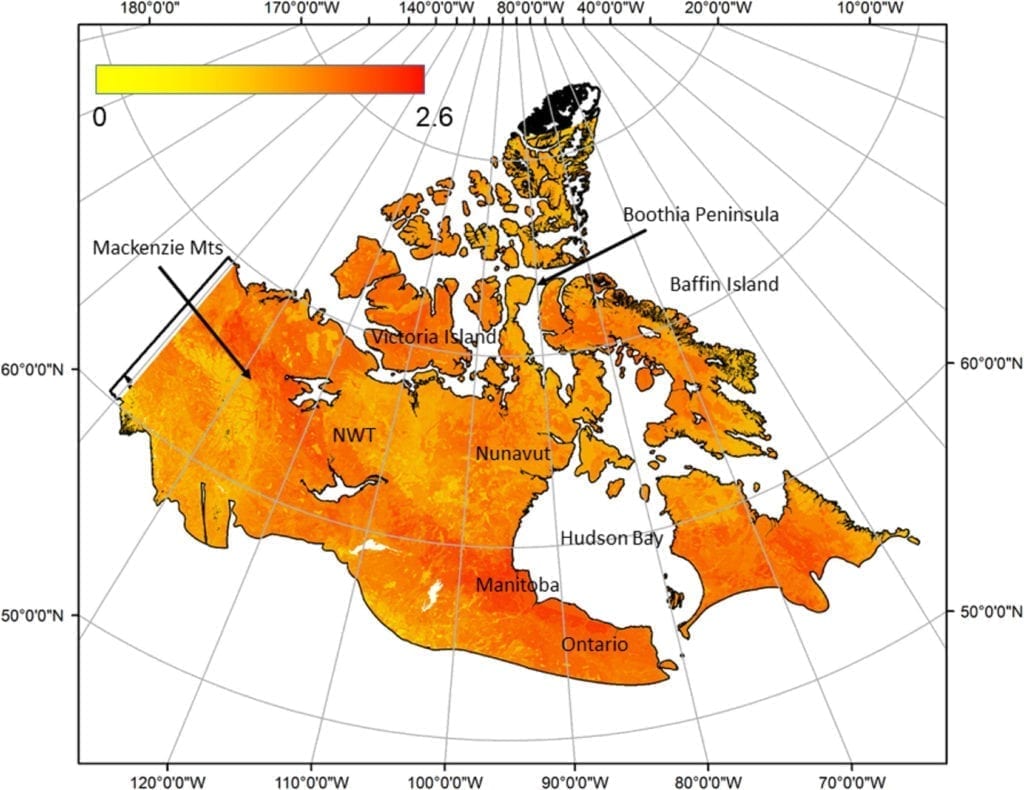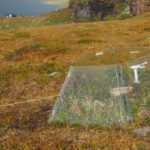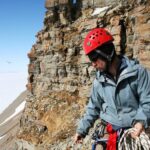Northern Canada is warming more than twice as fast as the global average. The Arctic is the epicentre of the climate crisis, experiencing rapid and extraordinary changes. One of those changes is the warming and thawing of permafrost, ground that normally stays frozen throughout the year.
“We wanted to know where in northern Canada water resources were most vulnerable to permafrost thaw,” said Dr. Chris Spence, a research scientist with Environment and Climate Change Canada, over email.
Dr. Spence is the lead author of a new study in Arctic Science that indicates some areas, including parts of the Northwest Territories, the Hudson Bay Lowlands, northern Quebec, and Banks, Victoria, and Baffin Islands are more vulnerable to permafrost thawing than other parts of Canada.
Using a model that considers features of the local permafrost and landscape, human infrastructure, rates of climate change, and other factors, the authors developed the Canadian Water Resources Vulnerability Index to Permafrost Thaw (CWRVIPT).
“The pan-Canadian scale of this work is the first of its kind,” said Dr. Spence. Most work on permafrost focuses on smaller scales, like a specific region, or on circumpolar trends, leaving a key information gap in the national state of Canadian permafrost.

Spatial distribution of CWRVIPT.
The broad scale of the index highlighted the complexities of permafrost thawing, and how some regions can experience the same problem for different reasons.
For example, while features of the terrain and the permafrost itself were the biggest determinants of thaw vulnerability between the Mackenzie River Delta to the Hudson Bay Lowlands, climate was a more important factor causing thaw in the Arctic Archipelago to the north.
“The data and information produced by this research can be used to identify where monitoring and mitigation are most needed,” noted Dr. Spence.
Though “much of the impact on water resources due to permafrost thaw is due to climate change,” and outside the control of local actions, understanding which water resources are the most at-risk for permafrost thaw could aid in developing regional or national strategies to tackle the issue.
“The loss of permafrost can change how and when water moves across the landscape and into rivers,” and this can alter the nature of a community’s water resource.
As Dr. Spence explained, “when the ground is frozen, water tends to flow overtop of it, or at shallow depths. As ground thaws, water more easily percolates through it. This changes the speed at which water flows towards rivers and in turn changes the chemistry of the water.”
The more that the permafrost thaws, the more these changes influence local water resources, like the rivers used for drinking water and fishing.
Dr. Spence added that the index can identify “areas where perhaps we should be more careful with activities we know to disrupt permafrost, because the water resources in these areas are relatively vulnerable.” For example, areas in central Yukon contain yedoma—a type of permafrost that is 50–90% ice. These areas are ranked highly vulnerable according to the CWRVIPT because of the high percentage of ice that can thaw and the destructive effect that would have on the landscape.
So, what’s next? Having focused on terrestrial data for this study, the team would “like to expand upon the index to evaluate permafrost thaw impacts on aquatic ecosystems.”
Read the paper: The Canadian Water Resource Vulnerability Index to Permafrost Thaw (CWRVIPT) in Arctic Science.
Banner image: Melting permafrost in Tombstone Territorial Park, Yukon, Canada | iStock




